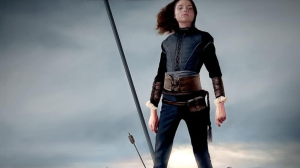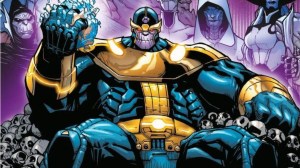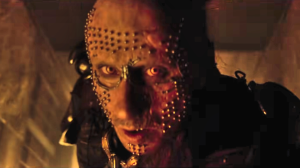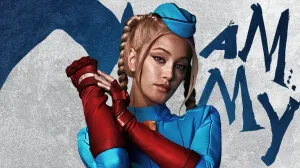This month, writer/artist Dan Jurgens returns to Superman as the ongoing writer for the first time in more than ten years. Co-writing the series with comics legend Keith Giffen and penciling for inker Jesus Merino (the sole remaining member of the creative team who launched the book with its September #1), Jurgens seems at once a safe choice and something of an odd one for the Superman of the New 52. While his take on the character is beloved by many fans, he also worked on the title for a long time, and the idea of bringing him back to the character seems to undermine the “new” in The New 52.As the writer and artist of some of Superman’s best-selling stories and easily the defining Super-scribe of the ’90s, Jurgens comes with a lot of baggage. That era in comics is not fondly remembered by many, and his run on Superman was in many ways the defining title of DC’s decade. Jurgens wrote and drew Superman #75 (“The Death of Superman”), the best-selling single issue of Superman and the comic that’s widely credited with fueling the speculator boom of the early 1990s. He also had a hand in the Man of Steel’s resurrection, the notorious “power change” story in the late ’90s and a number of other notable arcs during his nearly ten years on the character.That said, he also had a steady hand both as a writer and artist, turning out consistently strong work month in and month out–and regardless of whether readers perceive the Death and Return of Superman as something of a gimmick these days, it put the character back on the map for the first time since John Byrne’s Man of Steel miniseries and ushered in a kind of success for Superman that hadn’t been duplicated between the end of that story and the launch of the New 52. His place in the pantheon of Superman artists is assured and it made us stop to wonder: How many guys did that much good work with Superman? Below is our attempt at a list of the ten greatest Superman artists of the last seventy-five years (in no particular order). Feel free to chime in at the bottom and let us know who we missed!
Videos by ComicBook.com
- Curt Swan Ages ago, when Dan Jurgens was first approached to draw Superman during his first run on Booster Gold, he reportedly told DC that he couldn’t, because he couldn’t picture anyone except Swan, who had been drawing the character for well over a decade at that point. His take on Superman is so iconic that he was listed by DC as one of the “Fifty Who Made DC Great” during their fiftieth-anniversary celebrations in the ’80s. He’s also one of the most widely-reprinted Silver Age Superman artists, as the guy who drew many of Alan Moore’s Superman stories and, in particular, the classic Whatever Happened to the Man of Tomorrow?
- Murphy Anderson The 85-year-old Anderson worked with Curt Swan for decades, crafting a singular vision of Superman that’s so iconic and so embedded in the popular consciousness that even after twenty-five years of superstar artists coming and going, theirs is still the image you tend to find on t-shirts and coffee mugs. And for those of you who wonder what an inker is doing on the list (first of all–welcome to American comics, folks), check out Anderson’s resume sometimes. Besides the fact that most fans consider he and Swan to be essentially a package deal in their Superman work, there’s the fact that he had a guiding hand during the ’60s and ’70s in any number of substantial changes for DC heroes.
- Max and Dave Fleischer The Fleischers count as one, only because their contribution to the Superman mythos–as monumental as it was–was done as a team and likely could not have come as a result of just one of the pair. As the masterminds behind the popular 1940s animated short films, they not only introduced the Man of Steel to a whole new generation, and established many of the tropes of superhero filmmaking for decades to come, but also brought a sense of grandeur and unshakable cool to Superman that we wouldn’t see again for more than thirty years. They were the first who made us believe a man could fly–or at least leap tall buildings in a single bound.
- Al Plastino The self-taught Plastino not only created more pages of Superman art than just about anyone of his era, but he also helped guide Action Comics, Adventure Comics and Superboy through the ’50s–meaning that during the era that introduced concepts like Supergirl, Superboy and the Legion of Super-Heroes, he was one of the most recognizable artists working not just in comics, but specifically in the Superman offices, helping to craft the earliest days of those massively successful concepts. That’s a role that has taken on additional importance in the intervening years, given the nature of the trademark and copyright disputes between the families of Superman’s creators and DC Comics, wherein ancillary or derivative characters like those have become a large part of the dispute.
- Wayne Boring Coming out of the Siegel-Shuster studio, Boring became one of the first definitive Superman artists following its creators and worked extensively with Mort Weisinger, arguably the definitive Superman editor, in crafting an enduring vision for the character alongside Swan and Plastino (whose work largely followed Boring’s and who, therefore, he could be considered an influence on as well as a contemporary of). He’s also, along with Curt Swan and Dan Jurgens, one of three artists on this list to hail from the state of Minnesota.
- Joe Shuster The co-creator of Superman, Shuster’s contribution should be obvious. Without either the benefit or the hindrance of editorial oversight, the original Superman stories created by Siegel and Shuster for what they expected to be newspaper distribution irrevocably changed the face of an American art form, and created a genre that has so completely taken over comics that even visionary comics scribe Alan Moore can’t seem to differentiate between “American comics” and “mainstream, American superhero comics” in his interviews.
- John Byrne The act that followed Curt Swan, John Byrne had the unenviable task of taking a Superman who many fans had begun to think was fairly silly and irrelevant and transforming him into something relevant for the times without alienating the fanbase. The degree to which he succeeded at the latter can be debated, but his updated take on Superman and his supporting cast was iconic, fresh and possibly most important–enduring. Elements of the Byrne revamp have been incorporated into every subsequent comics, film and TV version of Superman since Man of Steel #1 rolled of the presses.
- Dan Jurgens For fans who came up during the boom times of the 1990s, Dan Jurgens’ take on Superman was THE take on Superman. Despite fantastic artists like Tom Grummett, Butch Guice and Stuart Immonen taking turns with the character, it was Jurgens’ interpretation of Superman–something like the body of John Byrne’s Superman along with the steely eyes of the earlier artists–that won out for most fans of that era. As the artist who killed Superman and created or co-created many of the greatest post-Crisis on Infinite Earths villains in the Man of Tomorrow’s rogues gallery, Jurgens followed Swan and then Byrne in becoming so synonymous with the character that it put tremendous pressure on those who followed him to try and match or one-up what he brought to the table.
- Ed McGuinness One of the few artists since the turn of the century to last more than a year or so on Superman, McGuinness has drawn dozens of Superman books over the course of several years and a few different titles, lending his distinctive and expressive style of art to a number of best-selling stories and graphic novels and inspiring toys and animated films that look arguably more like his style of art than almost any other artist could ever hope to see adapted to another medium. His bulky, cartoony, square-jawed Superman is the descendant of artists like Shuster, Boring and Jon Bogdanove, but the fluid quality of his linework creates a Superman who looks more ready to pounce than most of those artists ever really did.
- Frank Quitely In the era of short runs by superstar artists, Quitely’s is the name that takes the cake. While much of the credit for the success of All-Star Superman is laid at the feet of current Action Comics scribe Grant Morrison, it would be folly to ignore the contributions of Quitely, whose work perfectly embodied the strange and dreamlike, Silver Age-inspired lunacy that made the series such a rousing critical, artistic and sales success.








